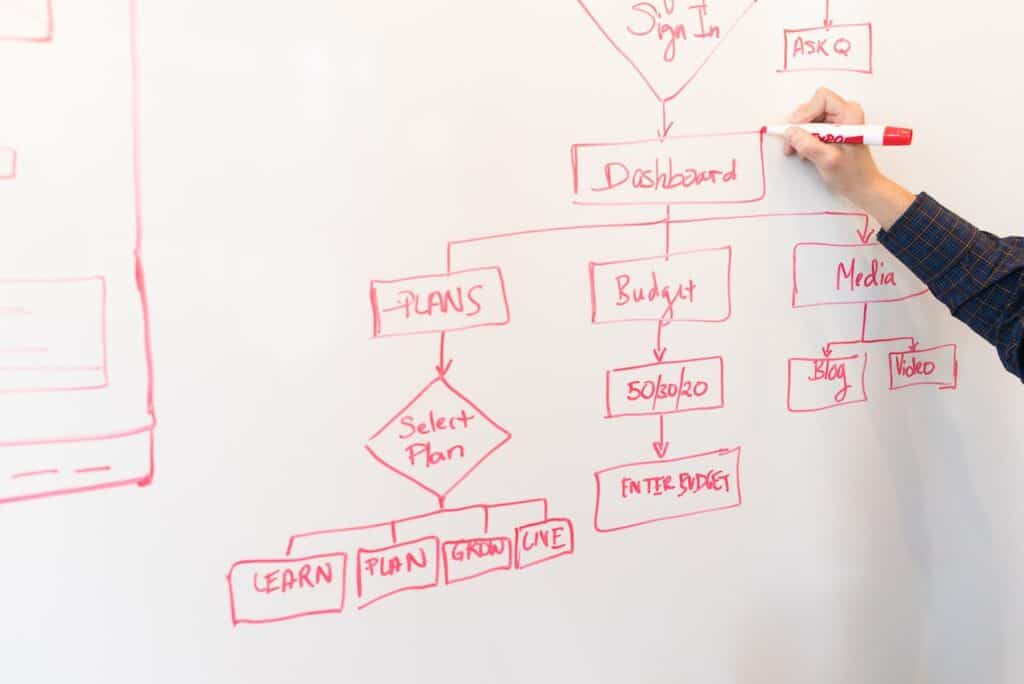Scrum masters use tools for product and sprint backlog organization, important metrics insight, team remote collaboration, process design, direct chat, and audio-video communication.
There are a lot of tools on the market for agile management. This post doesn’t aim to compare them to each other. I will emphasize what scrum masters should look for in a tool to do the job right, and give a few software examples from my experience.
Let’s take a look at different areas of scrum master’s activity according to what the scrum guide defines and what experience tells us.
Tool for Product Backlog management
We need a tool in which we can define product backlog items. That means every item must be independently described as detailed as necessary. We should be able to prioritize those items and group them together using a desired key. For example, we need to group work related to a specific feature from others.
We also should be able to distinguish types of product backlog items from each other. The product backlog accessible to all team members and others interested in product development provides transparency, a pillar needed in agile.
The Product Backlog is the domain of the product owner. If you know the tool very well – you can help your product owner in using it. If you want to know what else you can do for your product owner – check it out. The developers work with the product backlog during the refinement meeting.
Also, the product goal must be set, described in detail, and accessible to all.
Tool for Sprint Backlog management
The developers take from the product owner a part of product backlog items, decompose it into smaller, more technical pieces and make a sprint backlog out of it. The tool must provide this functionality. We must be able to isolate Product Backlog Items into a Sprint Backlog – a separate group of items we will work on during the sprint. The separate list for every planned sprint allows transparency and easy management.
We also need to set a sprint goal – an objective visible to everyone and easily accessible so we can refer to it on a daily basis.
During planning, we need to estimate tasks – the tool must allow assigning estimates to every backlog item. We must sum the estimates up and keep the team’s velocity in mind. We don’t want the scope to be too vast or too small.
When estimating on sprint planning, the team can use a scrum poker technic to forecast complicated tasks together. When collaborating on site the team can use cards or mobile apps to show estimates. When planning in a dispersed team you can use online tools to estimate together.
Tool for workflow organization
A kanban board for every sprint is useful.
As every team has its own habits, we need to be able to define a unique workflow on the team’s board.
The tool must allow us to define states for tasks as they travel through the workflow on the board. Basic to do, in progress, done is most of the times not enough. The workflow must mirror key steps in the team’s activities.
The feature of adding and editing team members assigned to tasks is a must-have.
This kind of board allows the team to track their progress toward achieving the sprint goal.

Tool for work statistics analysis
The scrum master must be able to help the developers to make the right decision. The decision must be made on the basis of specific data. If we have a good workflow organization tool, it should log transition times, the volume of work done in every sprint, time spent in status, unfinished work, and more. From this data, a tool must provide metrics that allow insight into the work process in the search for improvements.
A typical burndown chart, velocity chart, or other metrics should be provided by our tool. We use them in search of process bottlenecks, better planning routines, and others.
Tool for increment control
The product owner must be in control of every version scope. The tool must allow for defining and describing different product versions and assigning Product Backlog Items to them.
Tool for process design
Scrum masters don’t manage teams but they do have something to say regarding the process their in. Especially when working on dependencies between teams there is a need of designing rules of engagement. Sometimes a simple list or a table is not enough or doesn’t provide transparency.
There are tools for drawing diagrams that visualize the concept of a process for better understanding and transparent, easy to go back to documentation. Also, these tools give ease to create processes in a group and engage people with visuals from the start.

Tool for team’s remote collaboration
We entered an era of remote work and dispersed teams. The scrum team still has to collaborate together and in real time. Not being on site is not an issue anymore. We can have group brainstorming, story mapping, or even SAFE PI Planning, conducted by many people in one place and at one time.
Tools like Mural or Miro allow this magic to happen.
Events like sprint retrospectives or problem-solving workshops are easily facilitated with the use of those tools. Every meeting with the goal of resolving some issues in a group of people can be conducted in a shared space. In agile, usually, the facilitator is the scrum master.
Direct communication channels
That is no surprise. Every organization needs tools for emails, chats, and video conversations. Tools like MsTeams or Zoom are essential for everyday work. The scrum masters’ part is to set them up and use them accordingly. For example, teams need to have their own group chat as well as one for staying in touch with help desk problems. Another example: when there is an argument on chat it could be a good idea to call each other. When the argument is still there on audio – turn the video on. Seeing each other helps us to get a grip on ourselves and read our body language so there are fewer misunderstandings.
Tools for retrospectives
For a start, there are different ways to work with a group. You can inspire yourself with tools or idea banks like www.retromat.org or www.liberatingstructures.com
When you have a vast range of ways to find a problem to fix and how to work on a solution it’s time to facilitate. If you work online you can use the chosen remote collaboration tool and direct communication channel to commence the retrospective.
For me, Mural was a perfect tool to commence team activities as it gives the chance for introverts to give opinions without being dominated by those who always speak first. Mural also has lots of templates that help to choose the way to work on improvements with the team. When the template doesn’t meet your expectations, you can easily make your own scenario and summon your group to it.
In conclusion
Above are basic features when it goes to doing scrum master’s work in a software product.
In today’s world of dispersed teams, the knowledge of how to use certain tools is for a scrum master a must-have skill. You have to feel comfortable and be fluent in using those tools to a high degree.
The tools offer you the opportunity to do a good job – but it is you who have to bring value.






